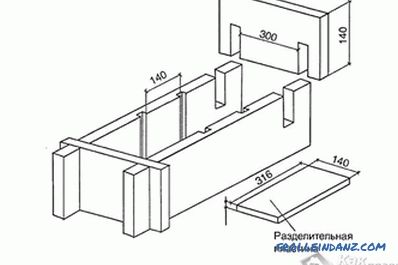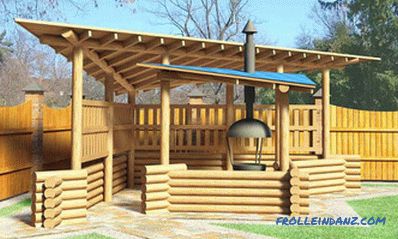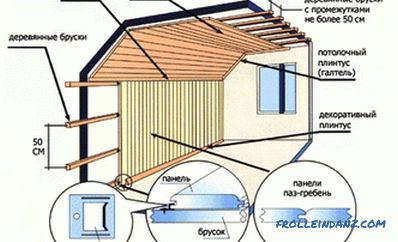As soon as autumn begins to openly declare its rights, it becomes cold in unheated apartments, especially at night. So people are rushing to the store for heaters designed to bring the long-awaited warmth and comfort to the house. To make it easier for you to choose, we offer a series of review articles about the different types of these devices. So, before your eyes the first article in this series. It is dedicated to the currently popular oil heaters.
Today we look at the principle of operation and design features of an oil-type electrical heater. We will also talk about how to choose an oil heater for domestic use, what you should pay close attention to, and which moments are absolutely unimportant. You will also learn how unpleasant consequences may be caused by improper operation of this device, and how to avoid it safely.
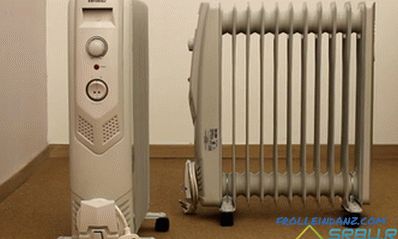
Design of an oil heater
The most important part of an oil-type heater is naturally the radiator. The material of its manufacture is ferrous metal, and the thickness is from 0.8 to 1 millimeter. Since the dimensions of all elements of this product must be very accurate, laser metal cutting is used for their manufacture, leaving behind a smooth edge and a smooth surface. For the creation of right angles, sheet bending equipment is used, and the smallest parts are stamped.
Each section of the radiator must be sealed, so the parts of which it consists of, are welded together (by the method of spot welding) and pressed. Prior to this, holes are made in them, allowing the radiator to be assembled from separate sections using a nipple joint characterized by impermeability and reliability. The paint applied to the radiator is very durable - after all, it is applied using powder technology and is polymerized by heating in a special oven.
When the radiator is fully assembled, mineral type transformer oil is poured into it. In the old models for this there was a special valve, but now the oil is filled directly during the assembly of the heater. At the same time, an electric heater is installed inside the device, observing tightness, and outside - plastic and metal panels, equipped with a thermostat, power regulator and overheating protection device. Also at this moment the power supply cable is connected.
For ease of use, the wheels are fastened with a bracket with nuts after the oil heater has taken its permanent place in the room.
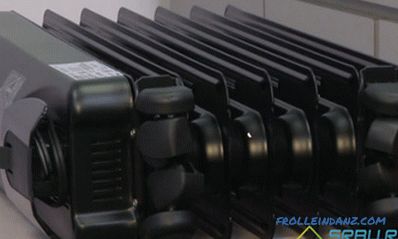
The principle of operation of an oil-type heater
Having turned on the heater in the network, the first thing to do is to set the desired air temperature in the room with the controller. At the same time, the heating element is first heated (electric heater), and then the heat from it is transferred to the mineral oil. Then everything is simple: hot oil heats the radiator case, and he, in turn, gives off heat to the air in the apartment. The maximum to which the metal of the body can be heated is 150 degrees. However, for different models of heaters this threshold is different - it may be lower, but not higher than this temperature.
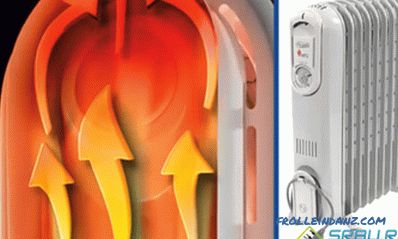
You shouldn’t believe the seller’s advertising tricks, which say with admiration that an oil heater can produce heat like a fireplace. This in principle can not be - in fact, according to the laws of physics, warm air rises. This is how convection happens. If we talk about radiant heat radiation, then it heats only the radiator fins, the sections of which are located opposite each other.
Choose an oil heater by the parameters
Power
First of all, let's pay attention to power. It depends on what area will be heated. Thus, a heater with a power of at least 1.5 kilowatts is required for 15 square meters. At the same time, it means that it is winter and hard frost. True, the device will not last long in this mode - it will have to work at maximum strength. Therefore, for heating the same 15 square meters, a 2 kilowatt heater is needed.
At maximum, it will work only on the most frosty days, and in the cool time - at half power. If the room you are planning to heat is small, then do not buy high-power models. So the device will constantly overheat, and the air in the room will not meet the standards.
Thickness of radiator sections
The second important parameter is the thickness of radiator sections. Narrow sections and heat quickly, and electricity "eat" a little, except that their total area is too small. So they heat the air is not very fast. As for the wide sections, they will, too, quickly cool the air, so there can be no talk about saving electricity. What is more priority - the speed of heating the room or savings - you decide.
Power mode switch
When you buy a device, be sure to check whether it has a power mode switch, an adjustable thermostat and an overheat protection function. And also it is desirable to have such an option as auto heating.
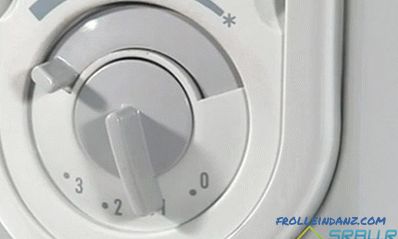
Air humidifier
The air in the room becomes extremely dry after long-term operation of any heater. Therefore, thinking about how to choose an oil heater for an apartment, it makes sense to dwell on models that have a special metal container to evaporate water. If desired, it can be easily removed.
Built-in Fan
There is one way to quickly heat the air in the room. To do this, next to the oil heater put the fan, turning it on a small power. At the same time, heat will quickly spread to all corners of the room. In some heaters, the fan is already there - it is built in, and it is very convenient, since there is no need to attach additional devices. I pressed the fan heater button on the case - and it is ready, the air in the room will heat up in no time. Therefore, deciding which oil cooler is better, give preference to a model that has a built-in fan.
Look at the safety of the model
For children's rooms, for example, manufacturers offer heaters with a cover that prevents the child from getting burned. Unfortunately, this casing slows down the process of movement of heated air, otherwise, convection.
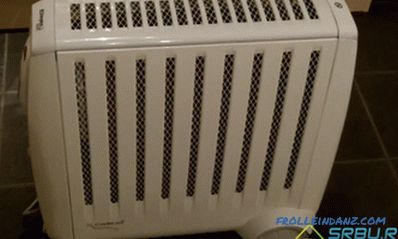
This is what a radiator with a protective casing looks like.
Instrument weight
When choosing an oil radiator, try it by weight - this is also important. And some manufacturers save material, and an impressive-looking device will be quite easy. Do not take this model. There is one of two things: either the radiator is made of too thin metal, or there is not enough oil poured into it. Both are not very good.
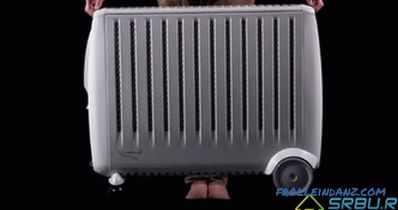
Do not fall for the cunning tricks of sales consultants
- If you are told that the heater of any model does not dry the air, do not believe it - any a device using convection will air dry.
- All oil heaters do not burn dust (their heater does not come into contact with the room air), therefore this property cannot be a plus for a certain model.
- If the seller claims that only "this heater" does not raise dust, allow yourself to doubt it. After all, convection causes the movement of air, and with it, the dust moves, especially stagnant.
- If you are told that a dark oil heater warms better than a light heater, then this is again a lie. Most likely, sellers need to sell stale goods. Think for yourself: after all, in a radiator, heating does not occur in the sun (in this case, really dark surfaces heat up more than light ones), but in a completely different way.
- Do not believe the existence of the mythical oil-type wall heaters - they do not exist in nature. So that the device does not overheat, it is placed from the wall in half a meter, not closer.
Technical Parameters of Oil Heaters
| Parameters | Values |
|---|---|
| Number of sections | From 3 to 14 pieces |
| Power | From 500 to 3000 W |
| Heating area | Up to 31 m 2 |
| Controls | Electronic or mechanical |
| Height | From 50 to 80 cm. |
| Width | From 30 to 50 cm. |
| Weight | 10 to 30 kg. |
| Case type | Harmonica or enclosed by a protective casing |
| Fan heater | Availability depends on the specific model |
| Humidifier | Availability depends on the specific model |
| Tilting sensor | Availability depends on the specific model |
| Heated towel rail | Availability depends on the specific model |
| Auto-switching | Availability depends on the specific model |
| The function of protecting the premises from freezing | Availability depends on the specific model |
Errors when using an oil heater and their consequences
1. In wet areas, for example, in a bathroom, an oil-type heater is extremely dangerous to use - it can strike with electric current.
2. Do not touch the surface of the working device with your bare hand (of course, if it is not equipped with a casing) - burn yourself.
3. From the walls, place the heater no closer than half a meter, otherwise the thermal relay will constantly turn off the device. Also, you can not close the radiator with a cloth or other materials, dry wet clothes on it. Things can be dried on a removable hanger, which is located at some distance from the radiator.
4. Lying on its side, the oil heater starts to be dangerous. Hot oil can break the radiator and cause a fire. After all, it is not poured to the very top, and in the position on its side it flows down from the ten, which, being exposed, heats up to 800 degrees. The result is a radiator rupture and unpredictable consequences. Hot oil can cause serious injuries to someone who happens to be close at this moment.
5. If the overheating sensor is faulty, never turn on the heater, it will also be dangerous. Indeed, in this case, the device will cease to turn off, basking to infinity. As a result, the likelihood of a rupture of the metal case and a fire again appears.
6. If you decide in winter to keep the oil heater in an unheated room, for example, in a garage, you can say goodbye to it forever - the radiator housing will be damaged and the oil will run out.
7. Never drag the device around the room for the power cord - this is fraught with a wire break or short circuit.
Thus, we have told you how to choose the right oil heater. For other types of radiators, see the following reviews.
Video: Choosing an oily heater


